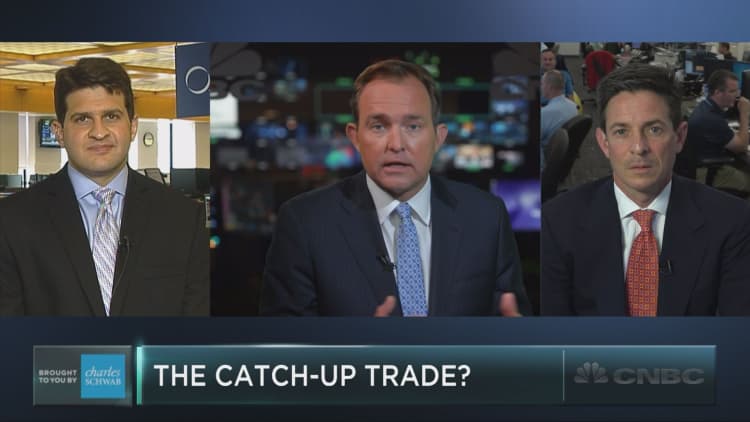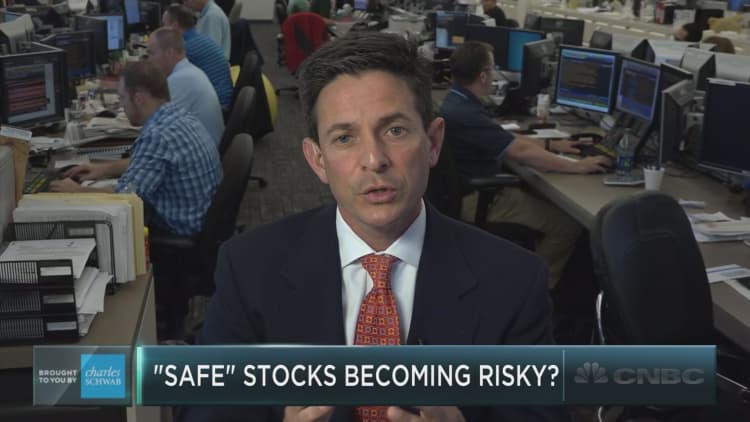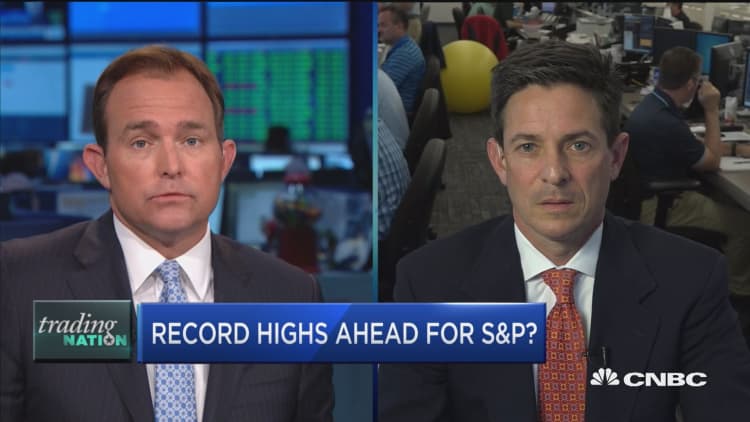



Markets in the U.S. and worldwide have seen expected high volatility in recent days thanks to uncertainty surrounding this week's Brexit vote. But one trader believes he has a way to profit from all the anxiety.
"This is the week of potential Brexit, and markets are pricing in high degrees of volatility, specifically in the macro markets like bonds and commodities and currencies," Todd Gordon of TradingAnalysis.com said Monday on CNBC's "Trading Nation." "I want to take advantage of this high volatility to set up a trade in the TLT."
The TLT, an ETF that tracks U.S. Treasury bonds with maturities of 20 years and longer, is up almost 5 percent in the last month. Gordon believes it can keep heading higher. He brings out a daily chart of the TLT and points to the implied volatility chart below it, which shows a spike in implied volatility through the last week.
"The greater the expected price movement over some kind of event, the more expensive puts and calls become because the greater the chance that strikes will become in the money," he said.
If that higher anticipated volatility fails to materialize, these options should be expected to fall in value. So for those who believe future volatility will be lower than the market implies, selling options is the way to go.
"We can take advantage of this implied volatility that is very expensive," Gordon said.
The specific trade Gordon plans to use bears the intimidating name "iron condor," but it's relatively straightforward: The sale of a call spread is paired with the sale of a put spread. In this case, with the TLT trading at about $134, Gordon sells the July 139.50-strike call and buys the July 140.50-strike call to hedge the risk of selling that contract; on the downside he sells the 128.50-strike put and buys the 127.50-strike put.
This creates a total credit of about 25 cents, which is the maximum Gordon can make. The maximum loss comes if the TLT closes on July expiration above $140.50 or below $127.50 — in either case, he will lose 75 cents.
While this risk/reward sounds unfavorable, the whole root of the trade is Gordon's belief that the TLT is unlikely to make a big move in the near future. In fact, since Gordon chose put and call strikes one standard deviation below and above the expected price, he expects to make that 25 cents some 68 percent of the time, based on the assumption that the TLT's returns are normally distributed.





